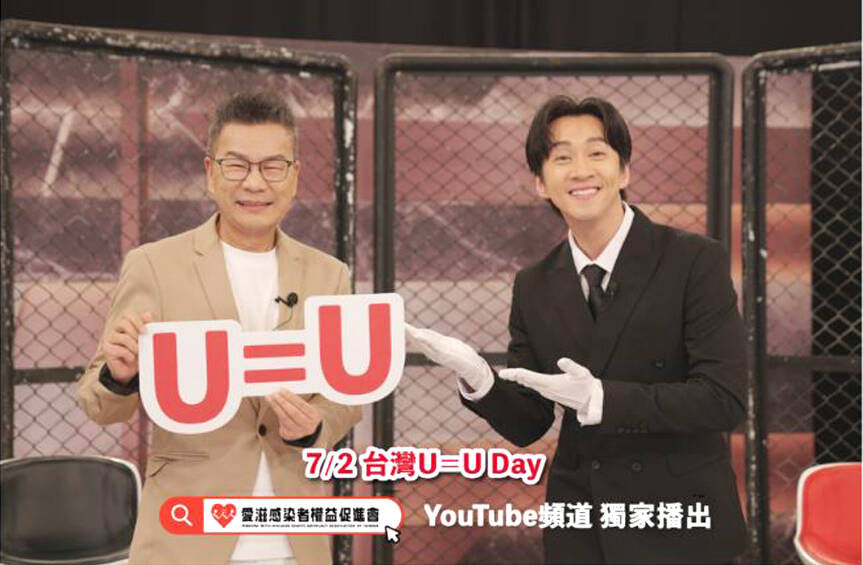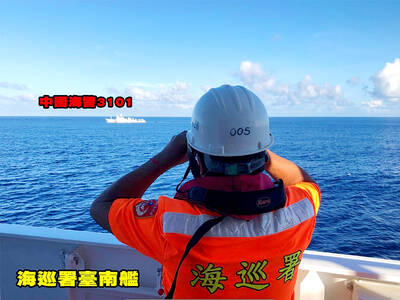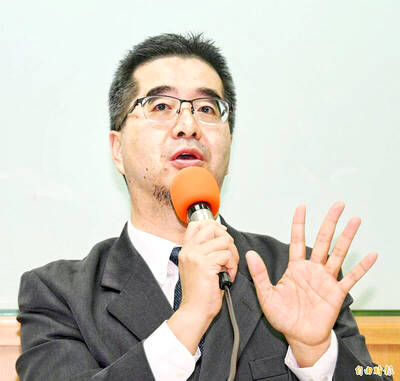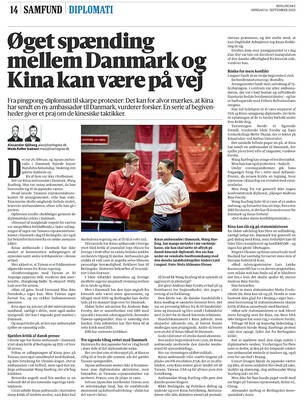People with HIV who have achieved “U=U” — a status of having an undetectable viral load after receiving effective therapy — should still consistently take their medication to maintain the status, the Persons with HIV/AIDS Rights Advocacy Association of Taiwan (PRAA) said on Tuesday.
“U=U” stands for “Undetectable = Untransmittable,” a public health message endorsed by UNAIDS, the WHO and other organizations, which means a person with HIV who is on effective antiretroviral therapy (ART) with an undetectable viral load cannot transmit HIV sexually.
On the eve of “National U=U Day” in Taiwan, a day set by the PRAA, a nonprofit organization dedicated to helping people with HIV/AIDS and their families strive for basic human rights, the association clarified five common misconceptions about “U=U” to raise public awareness and reduce stigma related to HIV.

Screen grab from the Persons with HIV/AIDS Rights Advocacy Association of Taiwan Web site
The PRAA quoted Centers for Disease Control (CDC) Deputy Director-General Tseng Shu-hui (曾淑慧) as saying that “U=U is one of the key concepts promoted by the CDC in recent years.”
“Taiwan’s HIV/AIDS prevention last year achieved ‘92-96-95,’ which means 96 percent people with HIV know their status, 95 percent of people diagnosed with HIV are receiving ART, and 95 percent of those on ART have achieved effective viral suppression,” the group quoted Tseng as saying.
The association also cited Taiwan AIDS Society member Lin Kuan-yin (林冠吟), a physician at National Taiwan University Hospital, as saying that U=U is the therapeutic goal of consistent treatment.
However, many people, including those with HIV/AIDS, have concerns and misconceptions about U=U, it said.
The first two common concerns about U=U are whether undetectable means HIV-negative, and whether U=U means fully cured and no longer in need of medication, the PRAA said.
“Undetectable” is defined as having less than 200 copies of HIV per milliliter of blood, as it typically cannot be detected by a standard viral load test, but it only means it is suppressed and has no risk of sexual transmission, which does not mean the virus is totally cleared or cured, the association cited Lin as saying.
People who have achieved U=U would still test positive in an HIV antibody/antigen test, and if they arbitrarily stop taking medication on their own, their viral load can increase or even lead to drug resistance, the PRAA quoted Lin as saying.
Two other common misconceptions about U=U are whether condoms are needed during sex and whether people who are U=U could give birth to a child with HIV, the association said.
Although scientific studies show that people who maintain an undetectable viral load through ART cannot sexually transmit HIV to others, using condoms is still recommended, as it also prevents other sexually transmitted infections, the association cited Lin as saying.
Regarding childbirth by people who have achieved U=U, there are medical procedures and medications that allow them to conceive naturally and prevent mother-to-child transmission, the PRAA cited Lin as saying.
Another common misconception is that “individuals who achieved U=U do not need to tell their partner about their HIV status,” the association said, adding that it suggests they carefully evaluate and reveal their status to their partners.
“U=U is a medically proven status, so we hope HIV will someday be like other underlying health conditions, no longer stigmatized and without need to hide from others,” PRAA secretary-general Ivory Lin (林宜慧) said.
TV entertainers William Shen (沈玉琳) and Hank Chen (陳漢典) starred in a promotional video, which is inspired by a real-life story of an individual who achieved U=U, but was asked by their partner’s mother to break up their relationship out of fear of HIV, she said, adding that it would help the public understand U=U and remove stigma.
The video was uploaded to the association’s YouTube channel yesterday.

The Coast Guard Administration (CGA) yesterday said it had deployed patrol vessels to expel a China Coast Guard ship and a Chinese fishing boat near Pratas Island (Dongsha Island, 東沙群島) in the South China Sea. The China Coast Guard vessel was 28 nautical miles (52km) northeast of Pratas at 6:15am on Thursday, approaching the island’s restricted waters, which extend 24 nautical miles from its shoreline, the CGA’s Dongsha-Nansha Branch said in a statement. The Tainan, a 2,000-tonne cutter, was deployed by the CGA to shadow the Chinese ship, which left the area at 2:39pm on Friday, the statement said. At 6:31pm on Friday,

The Chinese People’s Liberation Army Navy’s (PLAN) third aircraft carrier, the Fujian, would pose a steep challenge to Taiwan’s ability to defend itself against a full-scale invasion, a defense expert said yesterday. Institute of National Defense and Security Research analyst Chieh Chung (揭仲) made the comment hours after the PLAN confirmed the carrier recently passed through the Taiwan Strait to conduct “scientific research tests and training missions” in the South China Sea. China has two carriers in operation — the Liaoning and the Shandong — with the Fujian undergoing sea trials. Although the PLAN needs time to train the Fujian’s air wing and

The American Institute in Taiwan (AIT) put Taiwan in danger, Ma Ying-jeou Foundation director Hsiao Hsu-tsen (蕭旭岑) said yesterday, hours after the de facto US embassy said that Beijing had misinterpreted World War II-era documents to isolate Taiwan. The AIT’s comments harmed the Republic of China’s (ROC) national interests and contradicted a part of the “six assurances” stipulating that the US would not change its official position on Taiwan’s sovereignty, Hsiao said. The “six assurances,” which were given by then-US president Ronald Reagan to Taiwan in 1982, say that Washington would not set a date for ending arm sales to Taiwan, consult

A Taiwanese academic yesterday said that Chinese Ambassador to Denmark Wang Xuefeng (王雪峰) disrespected Denmark and Japan when he earlier this year allegedly asked Japan’s embassy to make Taiwan’s representatives leave an event in Copenhagen. The Danish-language Berlingske on Sunday reported the incident in an article with the headline “The emperor’s birthday ended in drama in Copenhagen: More conflict may be on the way between Denmark and China.” It said that on Feb. 26, the Japanese embassy in Denmark held an event for Japanese Emperor Naruhito’s birthday, with about 200 guests in attendance, including representatives from Taiwan. After addressing the Japanese hosts, Wang